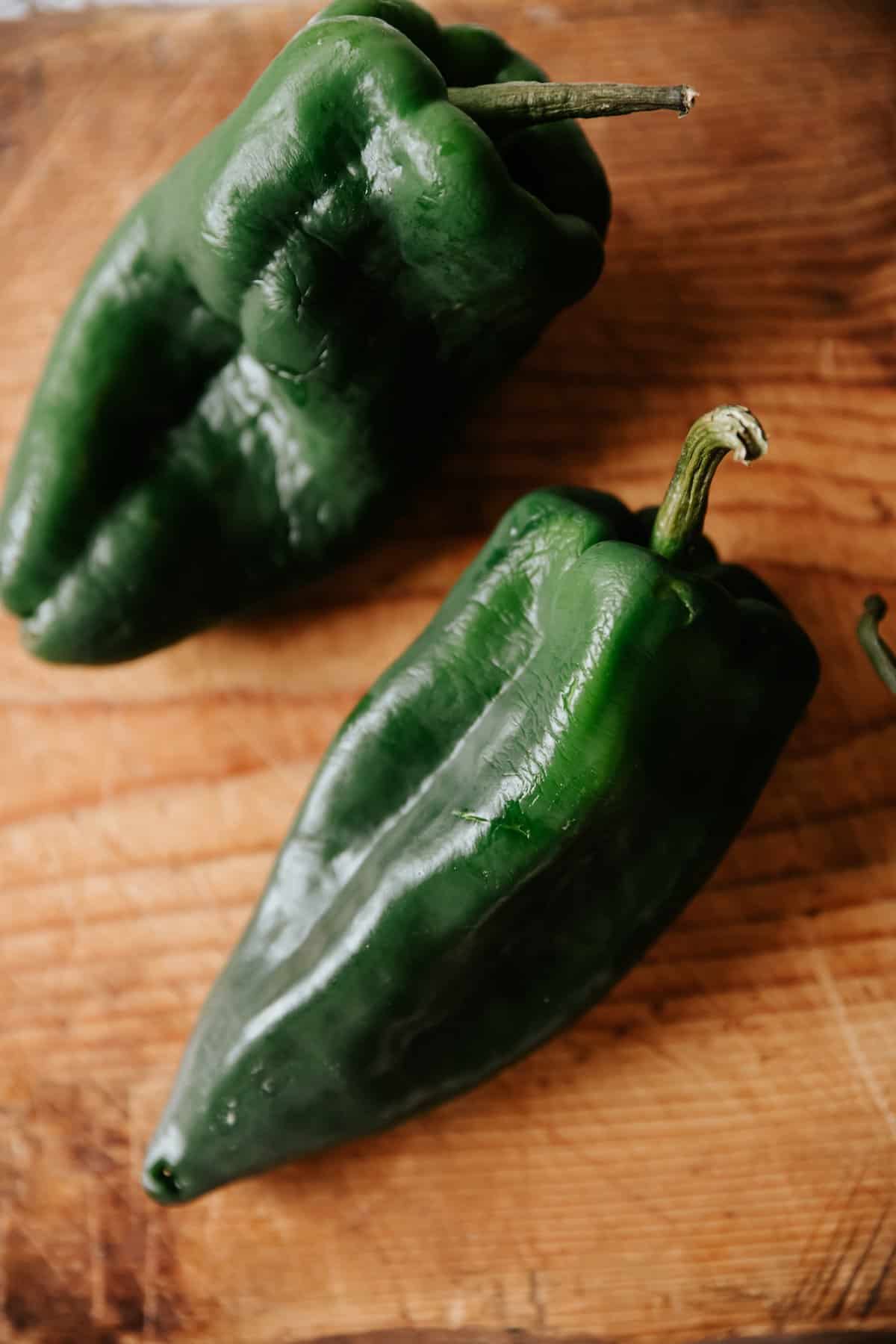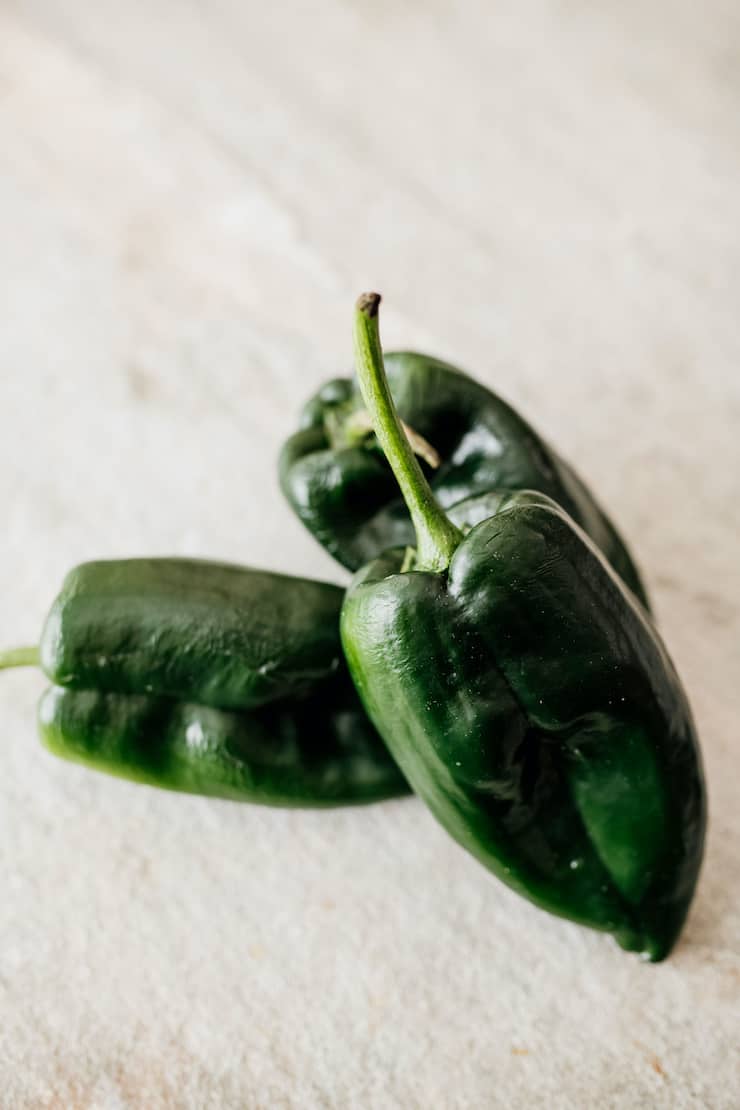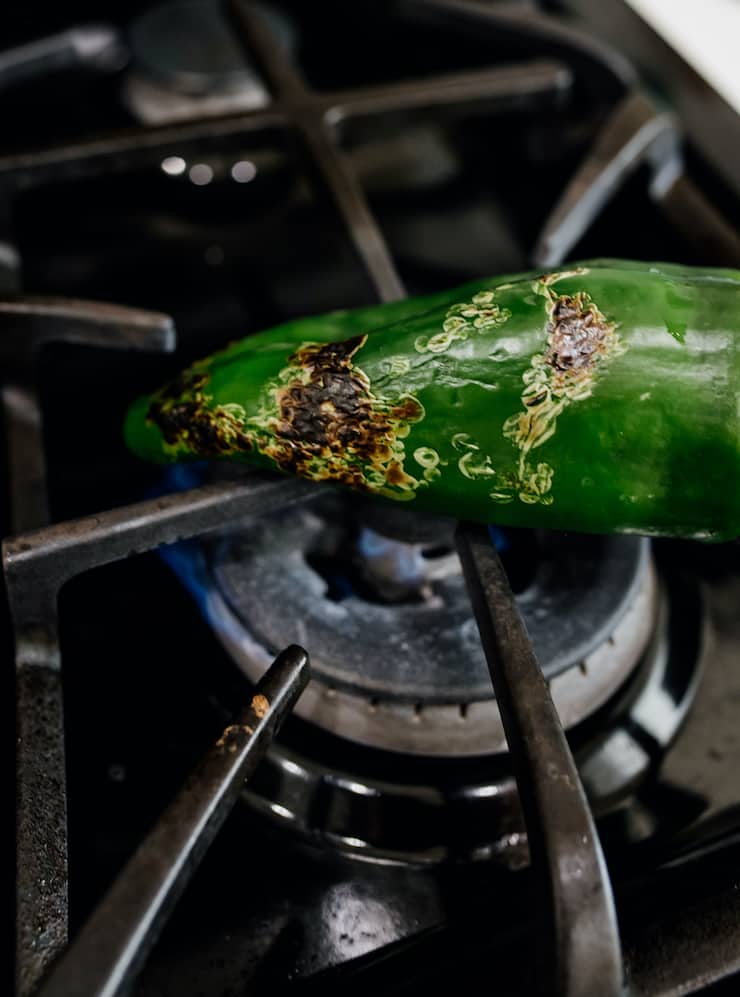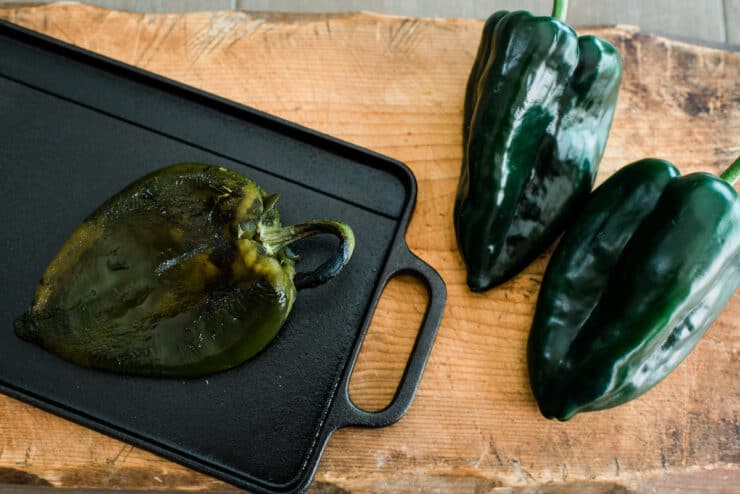Chile Poblano: Everything You Need To Know About Poblano Peppers
With a gorgeous dark green hue and a mild, delectable flavor, it’s no wonder that Mexican cuisine relies so heavily on the humble Chile Poblano. These family-friendly peppers are perfect for roasting, frying, stuffing, or adding to salsas.
Come along with me and learn all about these heart-shaped cuties; I have a feeling you’ll end up loving poblano peppers just as much as I do!

What Are Poblano Peppers?
Poblano (pronounced “puh-BLAH-no”) peppers are a staple ingredient in any Mexican kitchen. Native to Puebla, Mexico these relatively mild peppers are nearly ubiquitous throughout Tex-Mex and Mexican cuisine.
Chiles poblanos are most often picked while they are still a deep purple-green, which is when they are less spicy. If allowed to ripen further, they take on more of a reddish-brown hue and become much spicier. When dried, poblanos are known as ancho chiles.
While poblano peppers can be eaten raw, they are far more often cooked. Since they have thick, waxy skin, they are most often roasted and peeled before use.
The roughly heart-shaped fruits grow to approximately 3-6 inches long and 2-3 inches wide with nice, thick walls, making them a top choice for stuffed peppers like Chiles Rellenos.
They are also the primary component of the famous dish known as Chiles en Nogada. You’ll also find poblanos in recipes for salsas and mole sauces, among other dishes.

How Spicy Are Chiles Poblanos?
As with most chili peppers, poblanos have a range of spiciness. In this case, we’ll use the most common measurement for chili heat: Scoville Heat Units (SHUs, for short). Chiles poblanos usually fall within 1,000-2,500 SHUs. For context, bell peppers have 0 SHUs and jalapeños range from 2,000-8,000 SHUs.
Note that immature green poblano peppers will be less spicy than their red counterparts. Also, you should know that even peppers that come from the same plant can vary widely in their spiciness.
It’s all luck of the draw! That said, as compared to other peppers, poblanos are generally considered to be quite mild. Learn more about different type of chile peppers in this blog post.
How To Use Poblano Pepper
There are myriad uses for chile poblano in the kitchen. Here are some of my favorite ways to incorporate them into my meals:
- Want some added kick in your meals? Sub in poblanos for bell peppers when you want some extra heat.
- Perhaps the most widely known poblano use around, they’re great for roasting, stuffing, and frying into chiles rellenos.
- They’re perfect for making rajas (literally “strips”), which is a creamy dish featuring peppers, corn, and zucchini. It’s a true summertime delight!
- You’ll find them in Stuffed Poblano Chiles with Walnut Sauce, a simply divine recipe that you must try!
- Poblanos are also used for making a roasted mild salsa, sauce, or mole.
- Roast a poblano and place it on a torta or burger or chop for a quesadilla.

How To Roast Poblanos
There is no one way to roast chile, and the flavor is the same: I prefer to use my gas burner to roast my chile peppers on an open flame, my grandma roasted hers on a comal (iron griddle), and my mom roasts poblanos in the oven broiler.

The principals are basic: heat the chile enough to get the skin to begin to bubble, blacken, and separate from the flesh. Place the pepper in a plastic bag or covered container to steam while it is still hot, then peel off the skin. So simple!
For more specific instructions depending on your preferred method and an instructional video, please check out my post on How To Roast Chile Peppers.
Frequently Asked Questions
Anaheim Peppers are probably the best substitute for poblanos. Anaheims have a similar size, which makes them great for stuffing. That said, they range from a bit milder than poblanos to a bit hotter with a Scoville Heat Unit score of 500-2500. Chilaca or Pasilla peppers are also a good option.
If you are in the market for a very mild stuffing pepper, green bell peppers are also an acceptable substitute, though they don’t have the same complexity of flavor as poblanos. Their SHU score is 0, meaning they are not spicy at all.
You can also opt to use jalapeños, though they are markedly spicier with an SHU score of 2000-8000. Jalapeños are also much smaller than chiles poblanos, making them a less ideal option for stuffing.
One of my favorite factoids about Mexican peppers is that they have different names when they are fresh vs. when they are dried. When speaking about poblanos, their dried counterparts are known as ancho chiles. In this blog post I share some of my favorite chile pepper types and their best uses.
Fresh chiles poblanos have soared in popularity in the US, so you should be able to find them at most well-stocked supermarkets. Check in the produce section near the other peppers; they should be easy to find with their deep, dark green color! Or plant them in your garden.
If you are looking for the dried ancho version of poblanos, look in the ethnic foods section to find them in bags, or check the spice aisle for ground ancho chiles.
More Chile Poblano Recipes
Did you find this primer on Chiles Poblanos useful? Do you have any more questions? Let me know in the comments below!
 Muy Bueno: Fiestas
Muy Bueno: Fiestas 


2 Comments on “Chile Poblano: Everything You Need To Know About Poblano Peppers”
Poblano peppers sound really good. Thanks for explaining them. I know there are many different types of peppers but mostly around here I hear about the hotter ones.
I grow lots of poblanos in my home garden. They add great flavor to egg dishes, spaghetti, burritos, taco meats and many other uses. I broil them, steam them and peel. I use fresh as well as freeze them for later use. I love them as well as the many other peppers I grow.